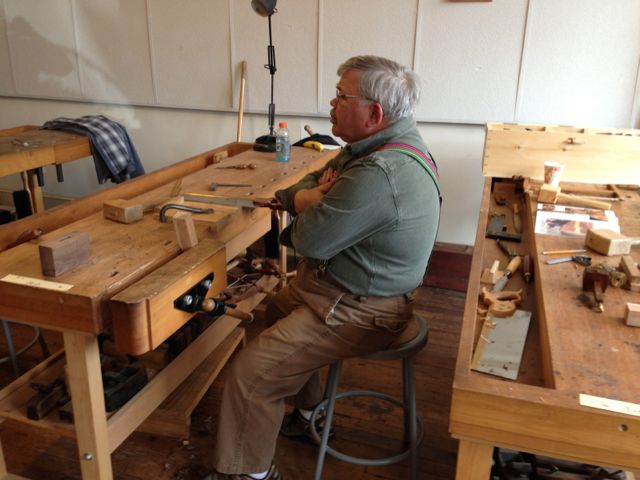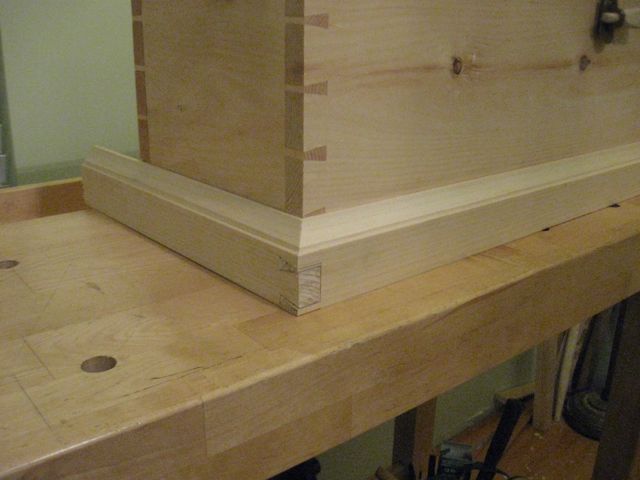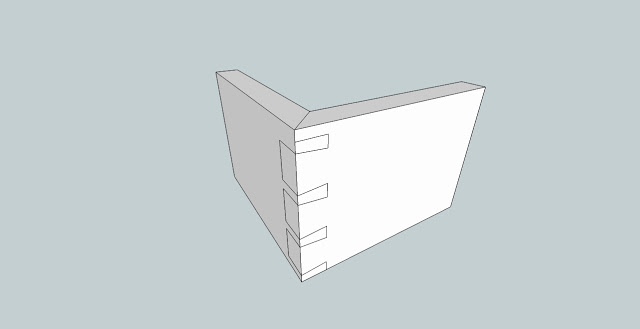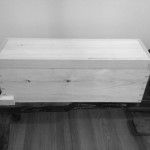You know, woodworking is so much fun. I just love the chance to carve up some wood with sharp tools and a little skill; after which, you have something new that you made, and can be proud of. After my previous weekend escapade (see A Bad Day post), I was in the need of some serious fun. The chance came in the form of a class at Roy Underhill’s Woodwright’s School. I was scheduled for the Mystery Mallet class on Saturday. This is a whole day class where you make an intriguing and beautiful woodworking puzzle. The class fit the bill perfectly to balance the experiences of the previous weekend.
Whenever I take classes at the Woodwright’s School, the time passes so quickly. I guess that is a good indication that I am having a good time. My neighbor, Bob, and I signed up together for this class. I always enjoy taking classes with Bob as he provides both humor and frankness to any situation.
Roy really does a great job of teaching and making you feel at ease. He is very supportive, and I always learn some new technique or tip to help me improve my skills. I was a little nervous about taking this class as it does require some precision cuts, and as I mentioned in my last blog, sawing is one of the areas where I need more experience. It turned out that my nervousness was unfounded, as Roy showed us some techniques that help keep your cuts clean and straight.
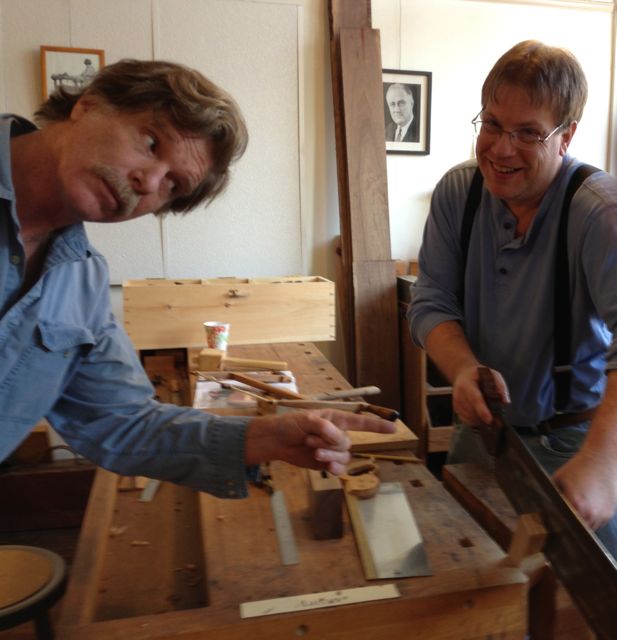
Roy attempting to teach me how to saw
For the most part, the day went very smooth. I was pleased to see that I was able to do all the cuts very accurately, and I did one the best mortices I have ever carved. This really gave me a lot of confidence for what was to come. I was also pleased with the pace of my progress; I was keeping up with the class. You see, I like to take my time in woodworking, so sometimes I lag the class.
At lunchtime, we ate at the S&T Soda Shoppe (they make the best milkshakes in the world). This is always a great way to slow down and discuss the class and other topics with Roy and to get to know your classmates. I also saw Will Myers there; he is the instructor for the Moravian Workbench class that I am scheduled to take in June. I had met Will in a previous saw sharpening class taught by Bill Anderson.
After lunch, I went to Ed Lebetkin’s tool store. Boy, this place is wonderful, but care must be taken to not empty my bank account. My wife, Beth, is pretty understanding, and knows when I go there I usually buy a tool….or five. This time, I only bought a 24″ folding rule and a #12 hollow moulding plane. This was money well spent as I needed both of these items. The #12 plane was a match to my #12 round moulding plane that I already own. Fortunately, I was through with my purchases when I heard Roy hitting the ceiling with a board, announcing class was commencing. I hurried downstairs to the classroom, not wanting to miss one minute of class time.
I did not mention it before, but there is some risk involved with this project; it can just “explode” during final assembly. I know it sounds a bit dramatic, but that is exactly what happens sometimes when assembling these mallets.
Back in the classroom, the class proceed as scheduled until Roy stopped the class to assemble a student’s mallet. The whole class held its breath as Roy and the student drove the handle into the mallet head. They finished, and the handle bottomed out; now the moment of truth: Time to release the vice holding the mallet head. If everything is good, there will be silence; if not, there will be a “CRACK!” Fortunately for the student it did not crack and it looked good.
I finished mine next. I followed Roy’s advice and made all the necessary adjustments to the handle. I fit it in the top as a test and everything looked good and not a bit tight. Roy asked me if I wanted to proceed and I said “Yes…” and then he said “You know it could go very wrong,” and I said “Let’s do this” and he said “OK….”
We started hammering away at this thing and it was slowly proceeding, moving very little with each mallet blow. Roy stopped for a second since we had stopped progressing and decided to get out the Big Mall. We proceeded to hammer away at it until it bottomed out. Then we removed it from the vice and found that there was a section that had caught and split off. Roy knocked it back in place and pronounced it done. Not planning to actually use this mallet for wood working, it looked pretty good with only a small crack where it had split. Roy said with some block planing and a little wax (a lot as it turned out), it would look great.
The rest of the class finished up in short order; all did a good job on their respective mallets. I had Roy sign the Popular Woodworking article featuring the “Mystery Mallet” and we said our goodbyes. All in all “A Good Day.” As I previously mentioned, my next class is in June and it is a five-day class, after which I will have a great workbench.
That week cannot get here soon enough!
-Aaron
p.s. Roy wrote a great article about how to build a “Mystery Mallet” for Popular Woodworking (April 2012 issue # 196) pictured in the beginning of this blog post.


